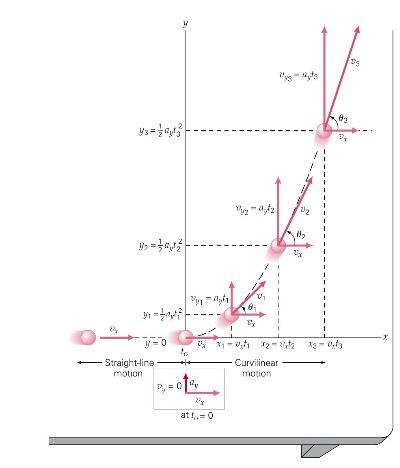Suppose that the ball in Figure 3.2 has an initial velocity of (1.50 mathrm{~m} / mathrm{s}) along
Question:
Suppose that the ball in Figure 3.2 has an initial velocity of \(1.50 \mathrm{~m} / \mathrm{s}\) along the \(x\)-axis. Starting at \(t_{\mathrm{o}}=0\), the ball receives an acceleration of \(2.80 \mathrm{~m} / \mathrm{s}^{2}\) in the \(y\)-direction. (a) What is the position of the ball \(3.00 \mathrm{~s}\) after \(t_{\mathrm{o}}\) ? (b) What is the velocity of the ball at that time?
THINKING IT THROUGH. Keep in mind that the motions in the \(x\) - and \(y\)-directions can be analyzed independently. For part (a), simply compute the \(x\) - and \(y\)-positions at the given time, taking into account the acceleration in the \(y\)-direction. For part (b), find the component velocities, and vectorially combine them to get the total velocity.
Step by Step Answer:

College Physics Essentials Electricity And Magnetism Optics Modern Physics Volume Two
ISBN: 9781032337272
8th Edition
Authors: Jerry D. Wilson, Anthony J. Buffa, Bo Lou






